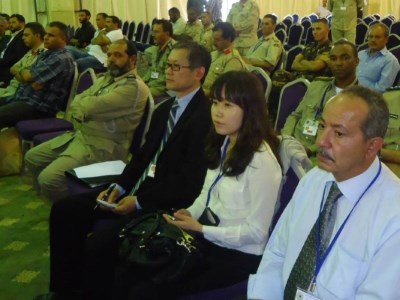Unrestricted, globally accessible, broadcast data. Quality content from all over the Internet. Available to all of humanity. For free. By leveraging datacasting technology over a low-cost satellite constellation,
Outernet is able to bypass censorship, ensure privacy, and offer a universally-accessible information service at no cost to global citizens. It's the modern version of shortwave radio, or BitTorrent from space.
"Everyone has the right to freedom of opinion and expression; this right includes freedom to hold opinions without interference and to seek, receive and impart information and ideas through any media and regardless of frontiers." — Article 19 of the Universal Declaration of Human Rights
WHAT PROBLEM IS OUTERNET SOLVING?
There are more computing devices in the world than people, yet less than 40% of the global population has access to the wealth of knowledge found on the Internet. The price of smartphones and tablets is dropping year after year, but the price of data in many parts of the world continues to be unaffordable for the majority of global citizens. In some places, such as rural areas and remote regions, cell towers and Internet cables simply don't exist. The primary objective of the Outernet is to bridge the global information divide.
Broadcasting data allows citizens to reduce their reliance on costly Internet data plans in places where monthly fees are too expensive for average citizens. And offering continuously updated web content from space bypasses censorship of the Internet. An additional benefit of a unidirectional information network is the creation of a global notification system during emergencies and natural disasters.
Access to knowledge and information is a human right and Outernet will guarantee this right by taking a practical approach to information delivery. By transmitting digital content to mobile devices, simple antennae, and existing satellite dishes, a basic level of news, information, education, and entertainment will be available to all of humanity.
Although Outernet's near-term goal is to provide the entire world with broadcast data, the long-term vision includes the addition of two-way Internet access for everyone. For free.
HOW DOES IT WORK?
Outernet consists of a constellation of low-cost, miniature satellites in Low Earth Orbit. Each satellite receives data streams from a network of ground stations and transmits that data in a continuous loop until new content is received. In order to serve the widest possible audience, the entire constellation utilizes globally-accepted, standards-based protocols, such as DVB, Digital Radio Mondiale, and UDP-based WiFi multicasting.

Citizens from all over the world, through SMS and feature-phone apps, participate in building the information priority list. Users of Outernet's website also make suggestions for content to broadcast; lack of an Internet connection should not prevent anyone from learning about current events, trending topics, and innovative ideas.
{youtube}
{/youtube}











 English
English  العربية
العربية 








